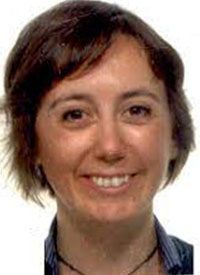Article
Selecting the Optimal Treatment Approach for Difficult-to-Treat, Relapsed/Refractory Myeloma
Author(s):
Certain patient and disease characteristics must be considered to select the optimal treatment approach for difficult-to-treat patients with relapsed or refractory multiple myeloma.
Alessandra Larocca, MD, PhD

Certain patient and disease characteristics must be considered to select the optimal treatment approach for difficult-to-treat patients with relapsed or refractory multiple myeloma, according to Alessandra Larocca, MD, PhD, who added that the introduction of several novel combinations has helped to improve outcomes in some of these challenging populations.
“Patients are really heterogeneous for different factors. These factors are related to the patient and their history, but are also related to the characteristics of the disease,” Larocca explained. “As such, when we approach the patient and we must decide on treatment, we must consider all these factors together. [Selection can be] particularly difficult in the relapsed/refractory setting because you must consider previous treatment, [including] response to therapy, the sensitivity of the disease, previous toxicity, and so on.”
In an interview with OncLive®, Larocca, consultant physician, Division of Hematology, Department of Hematology-Oncology, University Hospital Città Della Salute e Della Scienza, Torino, Italy, shed light on how to best manage the treatment of difficult-to-treat patients with relapsed or refractory multiple myeloma.
OncLive®: What characteristics make treating patients with relapsed or refractory multiple myeloma more difficult?
Larocca: [To select the right treatment for these patients,] you must consider characteristics of the patient, [which includes] the presence of comorbidities, functional status, independence, social support, and the drugs that the patient takes for different disease. You also have to consider the characteristics of the disease: biological factors, the presence of chromosomal abnormalities at higher risk, aggressiveness of the disease, such as extramedullary disease, renal insufficiency, the presence of plasma cells in the peripheral blood, and so on.
How much does age factor into treatment selection? What is your experience with managing elderly or frail patients?
In particular for frail, elderly patients, the balance between these factors can be very difficult because you have to consider the characteristics of the disease, but also, the characteristics of the patient can have much importance. For example, you probably cannot use an aggressive treatment for these patients, because they may have some limiting factors, like comorbidities and the absence of social support. You must consider these factors. This [process] can [really] be more challenging in frail, [elderly] patients compared with younger, fit patients.
How do you approach those with high-risk cytogenetics?
For high-risk patients, you have to consider [all available options to determine] the best option—the combination of proteasome inhibitors, immunomodulatory drugs, and monoclonal antibodies against anti-CD38. You must [determine] the best treatment option [that will allow you] to achieve the deepest response possible and potentially minimal residual disease negativity.
What specific treatment challenges are associated with renal insufficiency?
It depends on the grade of renal insufficiency because [patients] can have mild, moderate, or severe renal insufficiency. All myeloma drugs can be used for [those with] renal insufficiency.
Proteasome inhibitors, in particular, bortezomib [Velcade], does not need dose adjustments whereas immunomodulatory drugs, such as lenalidomide [Revlimid], need an adjustment for the creatinine clearance of the patients. There is also no [dose] adjustment needed for pomalidomide [Pomalyst]. This is very important for anti-CD38 monoclonal antibodies. You have a spectrum of drugs that you can use [for these patients] depending on the grade of renal insufficiency, and some drugs can be adapted.
Looking to the future, are there any emerging therapies that could further improve treatment with any of these difficult-to-treat populations?
We're very lucky because in this era, we have different drugs and combinations that we can use. Anti-CD38 monoclonal antibodies…are well tolerated in elderly and frail patients.
Newer combinations are now available, for example, isatuximab [Sarclisa], pomalidomide, and dexamethasone [Decadron]. Daratumumab [Darzalex] combined with lenalidomide, or with VMP [bortezomib, melphalan, and prednisone], is approved both at relapse and diagnosis.
Based on the characteristics of the patients and the previous treatment [received] and their sensitivity or refractoriness to a drug, particularly lenalidomide, you can choose 1 of these options at [the time of] relapse. We also have available combinations with carfilzomib [Kyprolis], which is a second-generation proteasome inhibitor.
Were any exciting data presented during the 2021 ASH Annual Meeting that you wanted to highlight?
The data presented at the ASH Meeting regarding new immunotherapies, such as CAR T-cell products and bispecific [antibodies] are very interesting. The efficacy data presented [were encouraging], and [we are seeing that] the safety profile [of these agents] is improving with [more experience and] use of these agents. Some of these drug, for example, bispecific T-cell engagers and bispecific antibodies, may be useful for [the treatment of] elderly patients. All these data were impressive, and can potentially impact [clinical] practice in the future.









